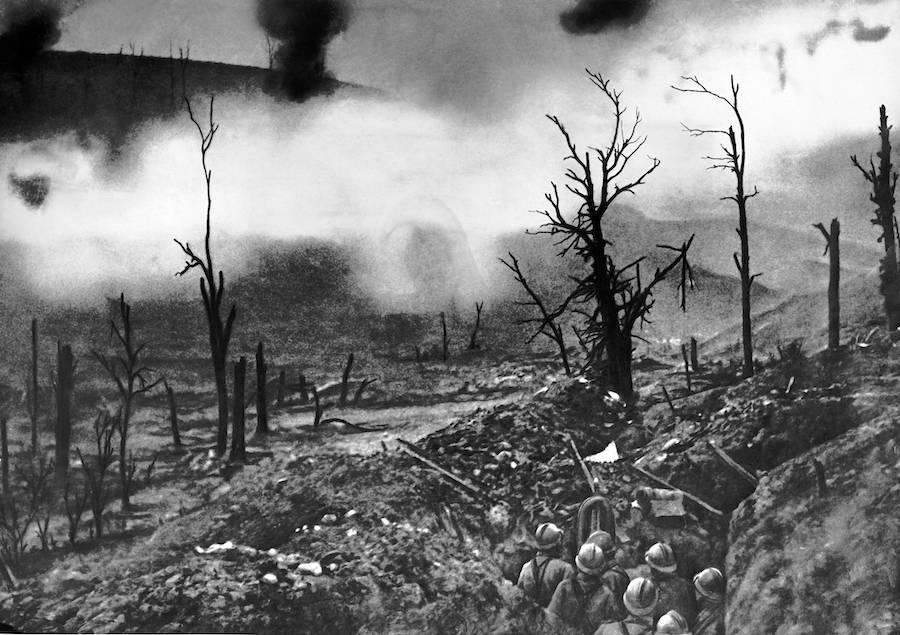
In the winter of 1915–16, German General Erich von Falkenhayn, the chief of the German General Staff (1914–1916) made plans for a large offensive on the Western Front that ultimately aimed to break the French Army through the application of firepower at a point that the French had to hold for reasons of national prestige. įollowing the failure of the Schlieffen Plan in 1914 and the solidifying of the Western Front, Germany remained on the strategic defensive in the west throughout most of 1915. One of the costliest battles in military history, Verdun exemplified the policy of a " war of attrition" pursued by both sides, which led to an enormous loss of life and very large casualty lists. Verdun was the site of a major battle, the longest-lasting of the First World War. Main article: Battle of Verdun Aerial photograph of Fort Douaumont towards the end of 1916 Bird's-eye view of Verdun in 1638 Battle of Verdun (1792) This consisted of a mutually supporting ring of 22 polygonal forts up to 8 kilometres (5.0 mi) from the city, and an inner ring of 6 forts. Shortly afterwards, a new system of fortification was begun. In the Franco-Prussian War, Verdun was the last French fortress to surrender in 1870. During the Napoleonic War, the citadel was used to hold British prisoners of war. Although much of his plan was built in the following decades, some of the elements were not completed until after the Napoleonic Wars. In 1670, Sébastien Le Prestre de Vauban visited Verdun and drew up an ambitious scheme to fortify the whole city.

The Bishopric of Verdun formed together with Tull ( Toul) and Metz the Three Bishoprics, which were annexed by France in 1552 (recognized in 1648 by the Peace of Westphalia).įrom 1624 to 1636, a large bastioned citadel was constructed on the site of the Abbey of Saint Vanne.
#Verdun battle site free
Verdun was part of the middle kingdom of Lotharingia, and in 1374 it became a free imperial city of the Holy Roman Empire. įrom 1200 onward, Verdun has been famous for its Dragées or sugared almonds they were distributed at the baptism of French princes. It is also possible that Liutprand was referring to Verona. While many still identify it as Verdun on the Meuse, some argue that Verdun-sur-le-Doubs is a more feasible identification. The identity of the "Verdun" mentioned in sources is disputed, because there are many cities called Verdun in Europe (such as Verdun-sur-Garonne in Occitania, and Verdun-sur-le-Doubs). The Italian ambassador Liutprand of Cremona, as one example in the 10th century, presented a gift of four eunuchs to Emperor Constantine VII. The 843 Treaty of Verdun divided Charlemagne's empire between his three surviving sons.Īround this time, a city called Verdun was the centre of the thriving European trade in young boys who were sold to the Islamic emirates of Iberia, where they were enslaved as eunuchs.

In 486, following the decisive Frankish victory at the Battle of Soissons, the city (amongst several other nearby cities) refused to yield to the Franks and was thus besieged by King Clovis I.

It has been the seat of the bishop of Verdun since the 4th century, with interruptions. Verdun ( Verodunum, a latinisation of a place name meaning "strong fort" in Gaulish) was founded by the Gauls. The A4 autoroute Paris–Metz–Strasbourg passes south of the town. Verdun is situated on both banks of the river Meuse, in the northern part of the Meuse department. It is well known for giving its name to a major battle of the First World War. Verdun is the biggest city in Meuse, although the capital of the department is Bar-le-Duc, which is slightly smaller than Verdun. It is an arrondissement of the department. Verdun ( / v ɜːr ˈ d ʌ n/, also UK: / ˈ v ɛər d ʌ n/, US: / v ɛər ˈ d ʌ n/, French: ( listen) official name before 1970 Verdun-sur-Meuse) is a large city in the Meuse department in Grand Est, northeastern France.


 0 kommentar(er)
0 kommentar(er)
